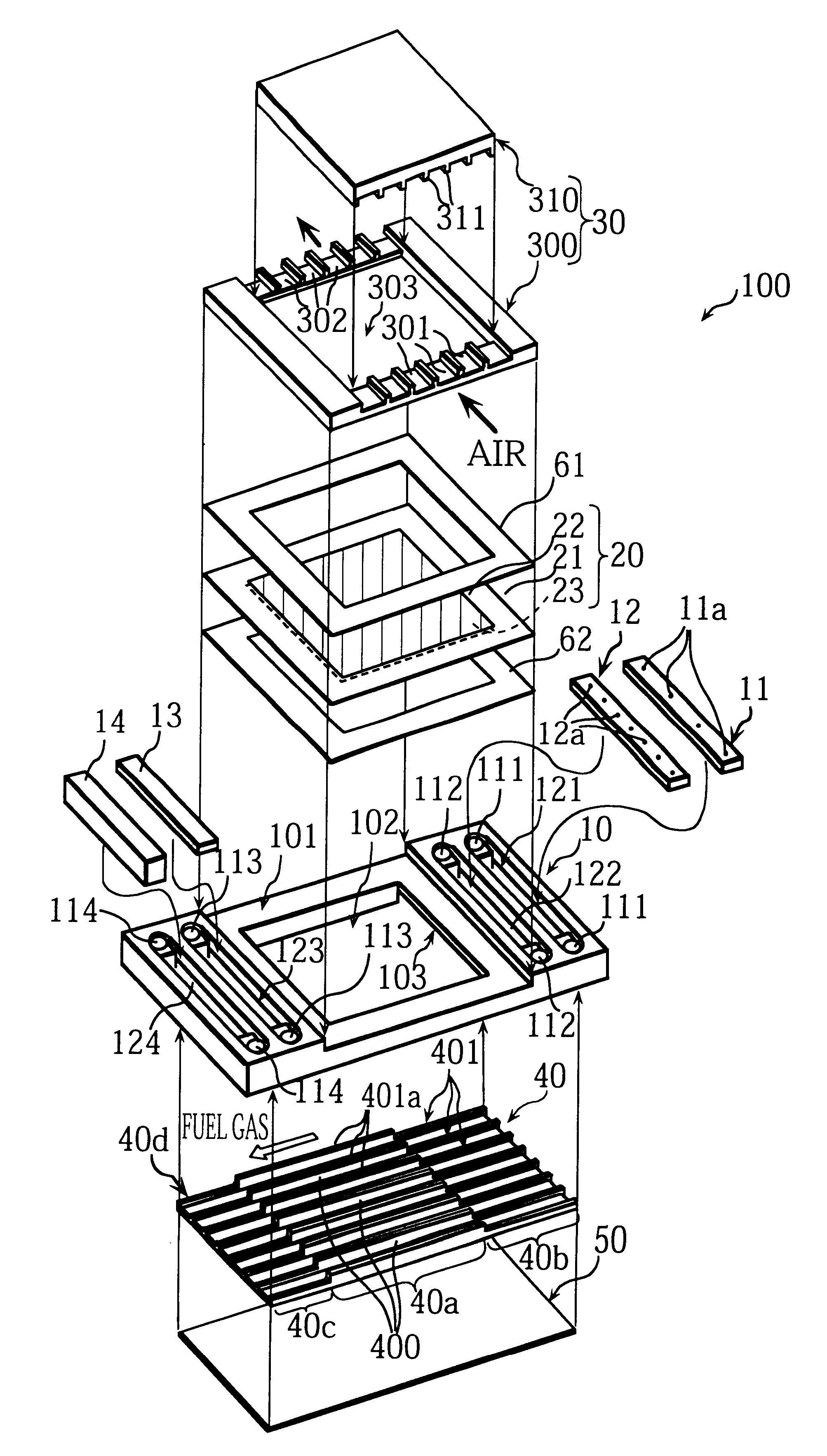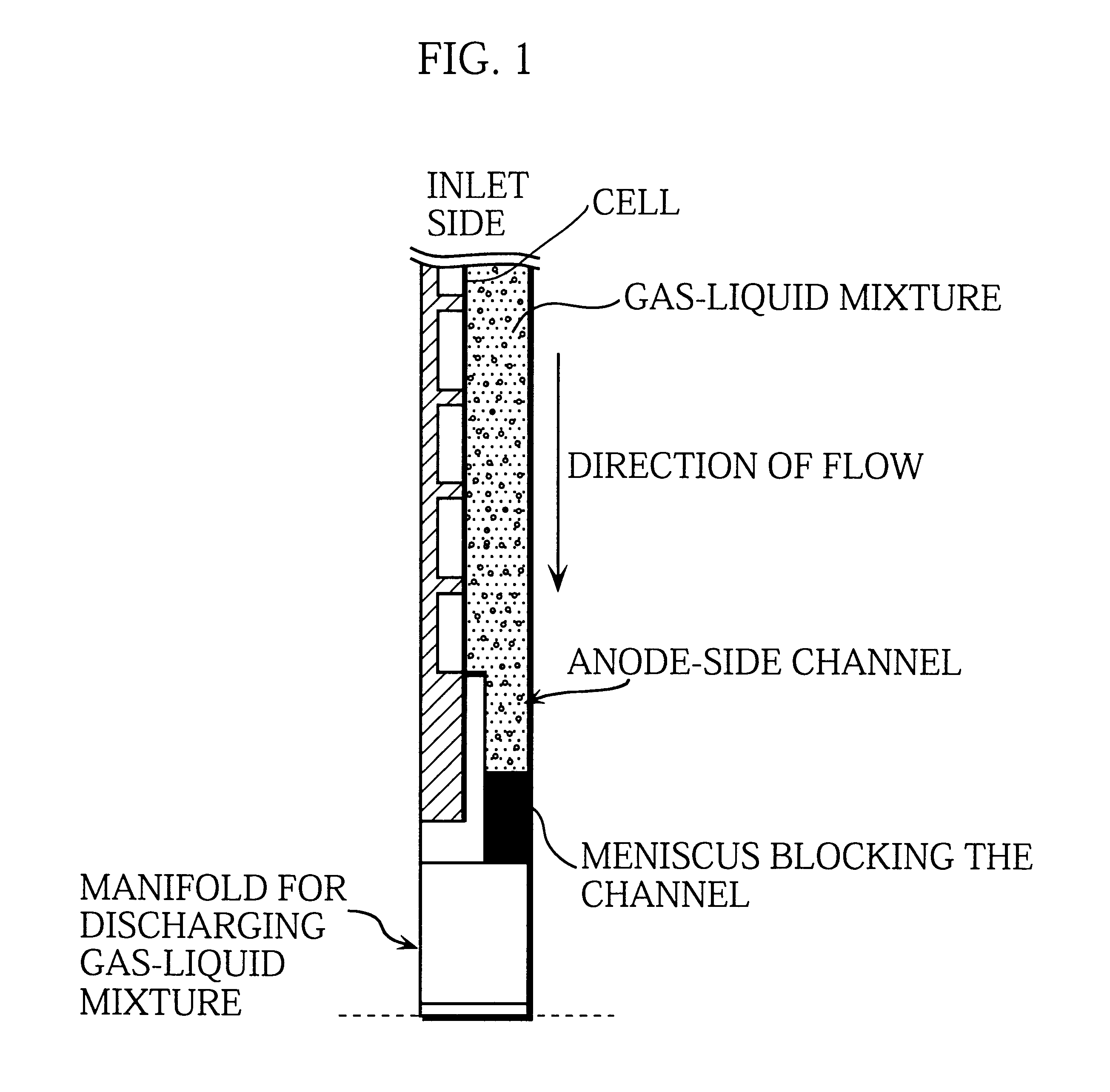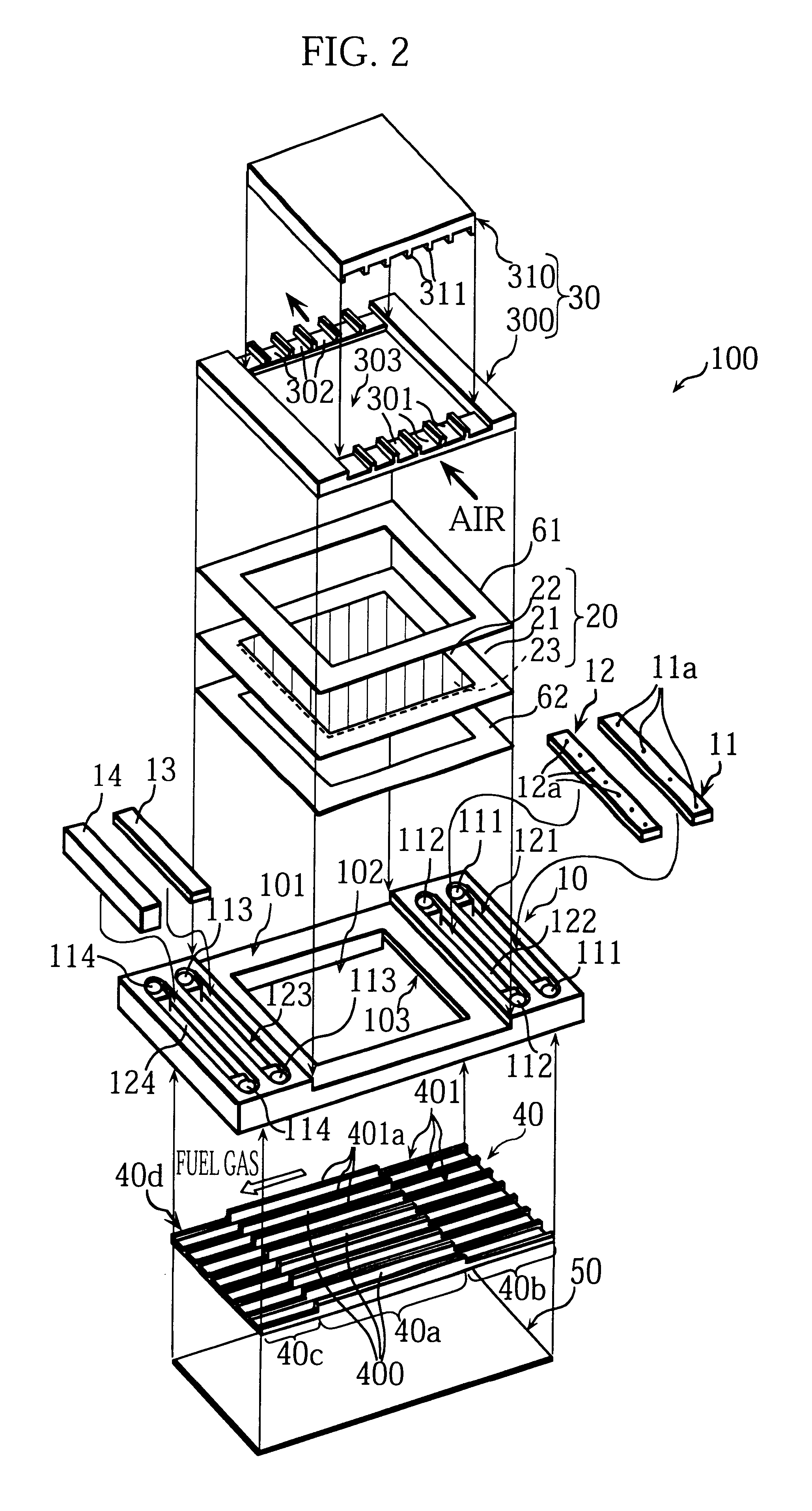Polymer electrolyte fuel cell showing stable and outstanding electric-power generating characteristics
a technology of electrolyte fuel cell and polymer electrolyte, which is applied in the direction of electrochemical generators, cell components, cell component details, etc., can solve the problems of fuel gas blocking, fuel gas blocking, fuel membrane needs to be moistened, etc., and achieve the effect of stable generation of electric power over tim
- Summary
- Abstract
- Description
- Claims
- Application Information
AI Technical Summary
Benefits of technology
Problems solved by technology
Method used
Image
Examples
embodiment 2
The fuel cell of the present embodiment is the same as Embodiment 1 except that water is supplied to all of the anode-side channels 400, and that water is supplied more upstream than the fuel gas.
More specifically, in the present embodiment, in the cell unit 100 shown in FIG. 2, the water distribution plate 11 is not fitted in the slot 121. The fuel gas is supplied to the manifolds 111, then distributed to the anode-side channels 400 through the slot 121. A water distribution plate, which is the same as the gas distribution plate 12 with pores corresponding to the anode-side channels 400, is fitted into the slot 122. Water is supplied to the manifolds 112, then distributed to the anode-side channels 400 through the pores.
FIG. 8 is a sectional view of the fuel cell of the present embodiment taken along the anode-side channels, and shows the generation, flow, and discharge of the gas-liquid mixture in the channels.
In the present embodiment, the gas-liquid mixture is generated in and f...
embodiment 3
FIG. 9 shows the operation of the fuel cell of the present embodiment, and is, like FIG. 7A, a top plan view of the cell unit.
The fuel cell of the present embodiment is the same as Embodiment 1 except that, as shown in FIG. 9, on the surface of the frame 10, two drain slots 115 are formed. Each drain slot 115 is formed between and connects a manifold 113 for exhausting gas and a manifold 114 for discharging water. A spongy material 116, which is the same as the spongy material 14, is fitted in the drain slot 115 to form a drain path.
During the operation of the fuel cell, especially during the operation with a high fuel utilization factor, the water contained in the gas is sometimes condensed in the manifolds 113 for exhausting gas. However, the water in the manifolds 113 is guided to the manifolds 114 (for discharging water) through the spongy material 116 fitted in the drain slot 115. With this construction, the blockage of the manifolds 113 by the condensed water is avoided.
On the...
embodiment 4
The fuel cell of the present embodiment is the same as Embodiment 2 except that a slit formation plate 15 replaces the gas-permeable plate 13 to selectively exhaust the gas in the gas-liquid mixture.
FIG. 10 is an assembly drawing of a main part of the cell unit which constitutes the fuel cell of the present embodiment. FIG. 11 is a sectional view of the fuel cell taken along the anode-side channels.
As shown in the above drawings, the slit formation plate 15 is a plate bended along the direction of the length. The slit formation plate 15 is divided into two parts: a support part 15a; and a shield part 15b. The slit formation plate 15 is attached along the slot 123.
The slit formation plate 15 is formed so that the support part 15a is held between the anode-side channel substrate 40 and the frame 10, that the shield part 15b shields most of the slot 123, and that a slit 15c is formed between the shield part 15b and the inside of the slot 123 so that gas can pass through the slit 15c.
As...
PUM
| Property | Measurement | Unit |
|---|---|---|
| width | aaaaa | aaaaa |
| diameter | aaaaa | aaaaa |
| length | aaaaa | aaaaa |
Abstract
Description
Claims
Application Information
 Login to View More
Login to View More - R&D
- Intellectual Property
- Life Sciences
- Materials
- Tech Scout
- Unparalleled Data Quality
- Higher Quality Content
- 60% Fewer Hallucinations
Browse by: Latest US Patents, China's latest patents, Technical Efficacy Thesaurus, Application Domain, Technology Topic, Popular Technical Reports.
© 2025 PatSnap. All rights reserved.Legal|Privacy policy|Modern Slavery Act Transparency Statement|Sitemap|About US| Contact US: help@patsnap.com



